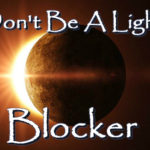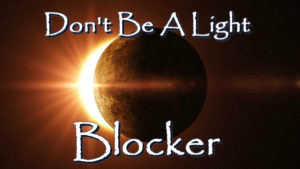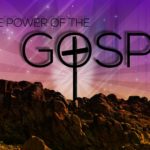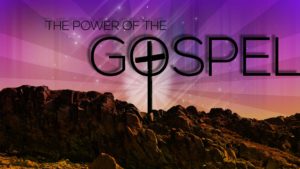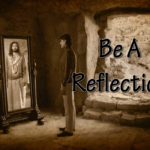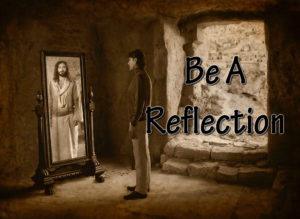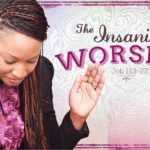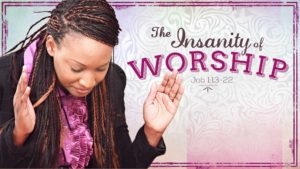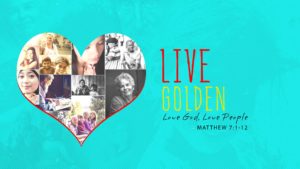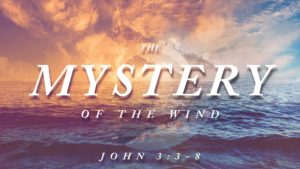Sep 2, 2018
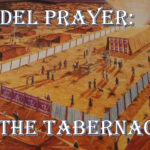
Model Of Prayer: The Tabernacle
By: Bro. George Riek
Series: Sept 2018
The Tabernacle shows us how to come into the presence of the Lord through prayer.
Did you know that the Tabernacle was given to Moses to help the Israelites come into God’s presence as they were wandering through the wilderness? The Tabernacle was a place where God dwelt among His people.
This same tabernacle model of prayer is a key to how we can have a deep and abiding experience of the Holy Spirit. Like the tabernacle, Jesus is our way into knowing and understanding the heart of God.
The Tabernacle was composed of three areas: the outer court, the Holy Place, and the Holy of Holies. Within each area were pieces of furniture with specific functions. The design and function of each element helped the Israelites and priests draw closer to Him. Likewise, each element of the Tabernacle shows us how to draw closer to Jesus Christ and seek His presence as we pray.
[caption id="attachment_4291" align="alignnone" width="1024"] Tabernacle of Moses Diagram[/caption]
Tabernacle of Moses Diagram[/caption]
 Tabernacle of Moses Diagram[/caption]
Tabernacle of Moses Diagram[/caption]
- Brazen Altar (Altar of Burnt Offerings). The priests sacrificed animals to atone for the people’s sins at the brazen altar. Under the new covenant, the altar represents Christ’s sacrifice on the cross. In prayer, we repent and die to self by giving up our own desires and seeking His will.
- Brazen Laver. The priests washed their hands and feet at the large basin known as the brazen laver. After we repent of our sins, we are washed by the blood of Jesus and cleansed of all our sins. We are changed and sanctified.
- Table of Shewbread: This was the table where the priest placed 12 special loaves of bread to represent the 12 tribes of Israel. This bread represents the Word of God, our bread of life. We are to partake of and be filled up by God’s Word, particularly in prayer. It is to be our guiding light.
- Golden Lampstand (Menorah): The seven oil lamps on the Golden Lampstand provided light in the Holy Place. For us, the lampstand represents the light of the Holy Spirit. The Holy Spirit gives us divine understanding of the Word and greater ability to discern the deeper things of God as we pray.
- Altar of Incense: The priests burned an offering of incense morning and evening. It is here that we worship, prayer, and intercede on the behalf of others as we hear and respond to God’s voice. Our prayers become a pleasing aroma to God, like incense.
Here we meet with God and sit in His presence. His spirit speaks to our spirit, we hear his voice, we have dreams and visions, and we respond in prayer. We have our most intimate times with Him in our symbolic Holy of Holies.
How to Use the Tabernacle as a Model for Prayer
Experiment with the tabernacle as a prayer model. Visualize yourself moving from the outer court into the inner court and then into the Holy of Holies. Symbolically perform the functions described above and summarized below at each piece of furniture.More from the Prayer Series:
WatchNotesDownloadDateTitle
- Sep 2, 2018Model Of Prayer: The Tabernacle
Sep 2, 2018
 Model Of Prayer: The TabernacleBy: Bro. George RiekSeries: Sept 2018The Tabernacle shows us how to come into the presence of the Lord through prayer.Did you know that the Tabernacle was given to Moses to help the Israelites come into God’s presence as they were wandering through the wilderness? The Tabernacle was a place where God dwelt among His people. This same tabernacle model of prayer is a key to how we can have a deep and abiding experience of the Holy Spirit. Like the tabernacle, Jesus is our way into knowing and understanding the heart of God. The Tabernacle was composed of three areas: the outer court, the Holy Place, and the Holy of Holies. Within each area were pieces of furniture with specific functions. The design and function of each element helped the Israelites and priests draw closer to Him. Likewise, each element of the Tabernacle shows us how to draw closer to Jesus Christ and seek His presence as we pray.[caption id="attachment_4291" align="alignnone" width="1024"]
Model Of Prayer: The TabernacleBy: Bro. George RiekSeries: Sept 2018The Tabernacle shows us how to come into the presence of the Lord through prayer.Did you know that the Tabernacle was given to Moses to help the Israelites come into God’s presence as they were wandering through the wilderness? The Tabernacle was a place where God dwelt among His people. This same tabernacle model of prayer is a key to how we can have a deep and abiding experience of the Holy Spirit. Like the tabernacle, Jesus is our way into knowing and understanding the heart of God. The Tabernacle was composed of three areas: the outer court, the Holy Place, and the Holy of Holies. Within each area were pieces of furniture with specific functions. The design and function of each element helped the Israelites and priests draw closer to Him. Likewise, each element of the Tabernacle shows us how to draw closer to Jesus Christ and seek His presence as we pray.[caption id="attachment_4291" align="alignnone" width="1024"] Tabernacle of Moses Diagram[/caption]
The Gate: The gate was the entry into the outer court. For us, Jesus is the gate into the outer court. When we accept Jesus as our Lord and Savior we pass through this gate and begin our relationship with the Father, Son, and Holy Spirit. Jesus is the one and only path into the presence of God. Outer court: Anyone who receives Jesus Christ can enter through the gate into the outer court of the Tabernacle. The outer court is a place of repentance and cleansing as we “burn up” and “wash away” anything that interferes in our relationship with Jesus. The Brazen Altar and the Brazen Laver were located in the outer court.Holy of Holies: A small, separate room called the Holy of Holies was located inside the Holy Place. It was here that the Ark of the Covenant – a golden box that contained all the symbols of God’s covenant with Israel – was kept. The Holy of Holies was God’s dwelling place that could only be entered by the High Priest annually to offer a sacrifice for people’s sins.
Tabernacle of Moses Diagram[/caption]
The Gate: The gate was the entry into the outer court. For us, Jesus is the gate into the outer court. When we accept Jesus as our Lord and Savior we pass through this gate and begin our relationship with the Father, Son, and Holy Spirit. Jesus is the one and only path into the presence of God. Outer court: Anyone who receives Jesus Christ can enter through the gate into the outer court of the Tabernacle. The outer court is a place of repentance and cleansing as we “burn up” and “wash away” anything that interferes in our relationship with Jesus. The Brazen Altar and the Brazen Laver were located in the outer court.Holy of Holies: A small, separate room called the Holy of Holies was located inside the Holy Place. It was here that the Ark of the Covenant – a golden box that contained all the symbols of God’s covenant with Israel – was kept. The Holy of Holies was God’s dwelling place that could only be entered by the High Priest annually to offer a sacrifice for people’s sins.- Brazen Altar (Altar of Burnt Offerings). The priests sacrificed animals to atone for the people’s sins at the brazen altar. Under the new covenant, the altar represents Christ’s sacrifice on the cross. In prayer, we repent and die to self by giving up our own desires and seeking His will.
- Brazen Laver. The priests washed their hands and feet at the large basin known as the brazen laver. After we repent of our sins, we are washed by the blood of Jesus and cleansed of all our sins. We are changed and sanctified.
- Table of Shewbread: This was the table where the priest placed 12 special loaves of bread to represent the 12 tribes of Israel. This bread represents the Word of God, our bread of life. We are to partake of and be filled up by God’s Word, particularly in prayer. It is to be our guiding light.
- Golden Lampstand (Menorah): The seven oil lamps on the Golden Lampstand provided light in the Holy Place. For us, the lampstand represents the light of the Holy Spirit. The Holy Spirit gives us divine understanding of the Word and greater ability to discern the deeper things of God as we pray.
- Altar of Incense: The priests burned an offering of incense morning and evening. It is here that we worship, prayer, and intercede on the behalf of others as we hear and respond to God’s voice. Our prayers become a pleasing aroma to God, like incense.
Here we meet with God and sit in His presence. His spirit speaks to our spirit, we hear his voice, we have dreams and visions, and we respond in prayer. We have our most intimate times with Him in our symbolic Holy of Holies.How to Use the Tabernacle as a Model for Prayer
Experiment with the tabernacle as a prayer model. Visualize yourself moving from the outer court into the inner court and then into the Holy of Holies. Symbolically perform the functions described above and summarized below at each piece of furniture.More from the Prayer Series: - Aug 26, 2018Praying For The Lost
Aug 26, 2018
 Praying For The LostBy: Bro. George RiekSeries: Aug 2018
Praying For The LostBy: Bro. George RiekSeries: Aug 2018Do you pray for the lost?
Many people have family, friends and loved ones who are not yet believers or have strayed away from God. Pray and believe knowing that God’s Word will be fulfilled in their lives.Only God can save a soul and each person must decide individually if he or she will believe in Jesus and accept the free gift of salvation. Prayer is an important part of the process. Here are a few suggested ways to pray.- Claim the person you are praying for as God’s purchased possession in the name of Jesus and on the basis of His shed blood. “ln Him we have redemption through His blood” (Eph. I:7, NASB).
- Ask God to tear down the works of Satan, like false doctrine, unbelief, or other teaching that the enemy may have built up in a person’s life. Pray for his thoughts to be taken “captive to the obedience of Christ” (2 Cor,10:5, NASB).
- Pray that the Holy Spirit will convict him of his sin and his need for a Savior. “The kindness of God leads you to repentance” (Rom. 2:4, NASB).
- Pray that the person will hear, receive, or read God’s Word and that God’s will and purposes may be accomplished through Scripture. “So will My word be which goes forth from My mouth; It will not return to Me empty, Without accomplishing what I desire” (Isa. 55:lI, NASB).
- Pray that the person’s eyes will be opened and ears unstopped so that the truth is heard. “And even if our gospel is veiled, it is veiled to those who are perishing, in whose case the god of this world has blinded the minds of the unbelieving so that they might not see the light of the gospel of the glory of Christ” (2 Cor. 4′.3-4, NASB).
- Pray with consistency and perseverance, not to persuade God but because of the resistance of the enemy. Read Daniel l0:12-13. “Therefore, my beloved brethren, be steadfast, immovable, always abounding in the work of the Lord, knowing that your toil is not in vain in the Lord” (l Cor. 15:58, NASB).
- Thank God for making us more than conquerors. “But in all these things we overwhelmingly conquer through Him who loved us” (Rom. 8:37, NASB). “Thanks be to God, who gives us the victory through our Lord Jesus Christ” (l Cor. 15:57 , NASB).
More from the Prayer Series: - Aug 19, 2018Biblical Models Of Prayer: Jabez
Aug 19, 2018
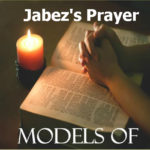 Biblical Models Of Prayer: JabezBy: Bro. George RiekSeries: Aug 2018"9 Jabez was more honorable than his brothers, and his mother named him Jabez saying, “Because I bore him with pain.” 10 Now Jabez called on the God of Israel, saying, “Oh that You would bless me indeed and enlarge my border, and that Your hand might be with me, and that You would keep me from harm that it may not pain me!” And God granted him what he requested." 1 Chron. 4:9-10 NASBThis little vignette, tucked away among the genealogies of the Chronicler, spawned a best-selling book at the dawn of the twenty-first century. Unfortunately, the best seller missed the point of the story, which reinforces some of the Chronicler’s key themes. The Chronicler tells us that Jabez, a descendant of Judah, was more honored than his brothers. That honor was surprising given his naming, for Jabez was named for pain. Yet, as his story unfolded, the pain that surrounded his birth was not what defined him. Jabez prayed and God transformed his situation from curse to blessing.The point is not that Jabez’s prayer has some kind of magic power in its words. The point is that God has awesome power to change a person’s destination from curse to blessing. We are all like Jabez, born under a curse, headed toward a life of pain and futility. But God has the power to rescue us from that fate. Jabez prays to be kept from evil so that the pain of the curse might not come upon him. God hears and answers his prayer, and he is blessed.So we should certainly pray like Jabez did, trusting God to transform our native curse into a blessing. But we are to pray remembering God’s promise to conform us to the life of Jesus, whose way to blessing runs through the path of suffering first, glory later. We can pray in His name knowing that He is even now praying for us in heaven.More from the Prayer Series:
Biblical Models Of Prayer: JabezBy: Bro. George RiekSeries: Aug 2018"9 Jabez was more honorable than his brothers, and his mother named him Jabez saying, “Because I bore him with pain.” 10 Now Jabez called on the God of Israel, saying, “Oh that You would bless me indeed and enlarge my border, and that Your hand might be with me, and that You would keep me from harm that it may not pain me!” And God granted him what he requested." 1 Chron. 4:9-10 NASBThis little vignette, tucked away among the genealogies of the Chronicler, spawned a best-selling book at the dawn of the twenty-first century. Unfortunately, the best seller missed the point of the story, which reinforces some of the Chronicler’s key themes. The Chronicler tells us that Jabez, a descendant of Judah, was more honored than his brothers. That honor was surprising given his naming, for Jabez was named for pain. Yet, as his story unfolded, the pain that surrounded his birth was not what defined him. Jabez prayed and God transformed his situation from curse to blessing.The point is not that Jabez’s prayer has some kind of magic power in its words. The point is that God has awesome power to change a person’s destination from curse to blessing. We are all like Jabez, born under a curse, headed toward a life of pain and futility. But God has the power to rescue us from that fate. Jabez prays to be kept from evil so that the pain of the curse might not come upon him. God hears and answers his prayer, and he is blessed.So we should certainly pray like Jabez did, trusting God to transform our native curse into a blessing. But we are to pray remembering God’s promise to conform us to the life of Jesus, whose way to blessing runs through the path of suffering first, glory later. We can pray in His name knowing that He is even now praying for us in heaven.More from the Prayer Series: - Aug 19, 2018Personal Prayer
Aug 19, 2018
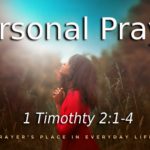 Personal PrayerBy: Bro. George RiekSeries: Aug 2018"We look upon prayer as a means of getting things for ourselves; the Bible's idea of prayer is that we may get to know God Himself." -Oswald ChambersPrayer is first and foremost a personal relationship with Jesus Christ. Some people think of prayer as a business transaction or as something they have to do just like checking something off a to-do list. But that isn't really prayer at all. Think of prayer in intimate terms, like a conversation between close friends. What are some words you think of when you think of an intimate friendship? You probably think of words like loving, caring, warm, sincere, personal and intimate. These are words that should be used to describe our prayer time with the Lord. Prayer should not be dry or stuffy; it should be warm and intimate.Every believer can have a dynamic personal prayer life. The Bible gives us the keys we need to develop a powerful prayer life. The Scriptures are full of examples of men and women who walked with God and used prayer to impact their world, and you can do the same thing through prayer.More from the Prayer Series:
Personal PrayerBy: Bro. George RiekSeries: Aug 2018"We look upon prayer as a means of getting things for ourselves; the Bible's idea of prayer is that we may get to know God Himself." -Oswald ChambersPrayer is first and foremost a personal relationship with Jesus Christ. Some people think of prayer as a business transaction or as something they have to do just like checking something off a to-do list. But that isn't really prayer at all. Think of prayer in intimate terms, like a conversation between close friends. What are some words you think of when you think of an intimate friendship? You probably think of words like loving, caring, warm, sincere, personal and intimate. These are words that should be used to describe our prayer time with the Lord. Prayer should not be dry or stuffy; it should be warm and intimate.Every believer can have a dynamic personal prayer life. The Bible gives us the keys we need to develop a powerful prayer life. The Scriptures are full of examples of men and women who walked with God and used prayer to impact their world, and you can do the same thing through prayer.More from the Prayer Series: - Aug 5, 2018Don’t Be A Light Blocker
- Aug 5, 2018The Power Of The Gospel
- Jul 29, 2018Be A Reflection
- Jul 22, 2018The Insanity Of Worship
- Jul 15, 2018Hiding Our Hurts
- Jul 15, 2018Live Golden
- Jul 8, 2018The Mystery Of The Wind
- Jul 1, 2018Free Indeed!

